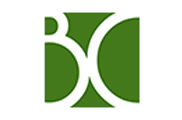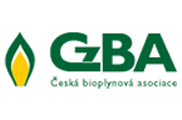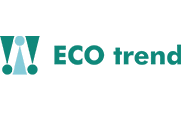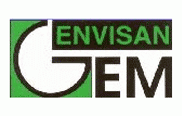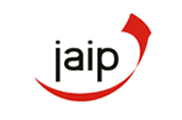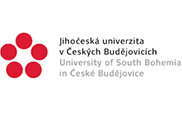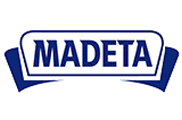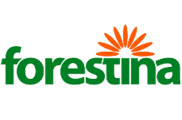Novartis receives two landmark European approvals for Cosentyx to treat patients with ankylosing spondylitis and psoriatic arthritis
Date: 23.11.2015
Basel, November 23, 2015 - Novartis announced today that the European Commission (EC) has approved Cosentyx ® (secukinumab) for the treatment of people living with ankylosing spondylitis (AS) and psoriatic arthritis (PsA). For AS, this is the first new treatment advance in 16 years since the development of the current standard of care, anti-tumor necrosis factor (anti-TNF) therapy[7] .
Cosentyx is the first in a new class of medicines called interleukin-17A (IL-17A) inhibitors to be made available in Europe for AS and PsA. These approvals follow on from the earlier EC approval of Cosentyx for the first-line treatment of patients with moderate-to-severe plaque psoriasis.
AS and PsA are common inflammatory joint conditions affecting approximately five million people in Europe, yet they remain significantly under-diagnosed and under-treated[1],[8-12]. If not treated effectively, they can lead to irreversible damage to the spine and joints, causing life-long pain and disability[13]. New treatments are urgently needed for both conditions as many patients do not respond well to existing treatments, with up to 40% not responding sufficiently to anti-TNFs[6].
"The strong treatment benefits seen in our studies suggest that Cosentyx may give patients the chance to stop the disease from progressing, preventing living with pain and disability," said David Epstein, Division Head, Novartis Pharmaceuticals. "These approvals mean that people living with ankylosing spondylitis and psoriatic arthritis across Europe can now start to benefit from this next generation biologic that has the potential to become a new standard of care for these common but under-treated inflammatory conditions."
Recent studies have shown that Cosentyx provided a significant reduction in the signs and symptoms of AS or PsA as early as Week 1-3, which were sustained over two years[2],[3]. Up to 80% of AS patients treated with Cosentyx showed no progression in spinal damage as measured by x-ray over two years[4]. In PsA, 84% of patients showed no progression of joint damage on x-ray over two years[5].
More than 9,600 patients have been treated with Cosentyx in clinical trials across multiple indications, and over 12,500 patients have been treated in the post-marketing setting[14]. The safety profile of Cosentyx was shown to be consistent with that seen in clinical trials across multiple indications[2-5],[14].
Cosentyx is now licensed to treat active AS in adults who have responded inadequately to conventional therapy, such as non-steroidal anti-inflammatory drugs, and for the treatment of active PsA in adult patients alone or in combination with methotrexate when the response to previous disease modifying anti-rheumatic drug therapy has been inadequate.
About the European Commission approval
The European Commission marketing authorizations for Cosentyx are applicable to all European Union and European Economic Area countries.
For patients with AS and PsA, the approved dose is Cosentyx 150 mg by subcutaneous injection (under the skin) with initial dosing at Weeks 0, 1, 2 and 3, followed by monthly maintenance dosing starting at Week 4. For patients with PsA who also have moderate-to-severe plaque psoriasis, or who are anti-TNF inadequate responders, the recommended dose is Cosentyx 300 mg.
Pivotal Phase III studies in the Cosentyx clinical trial program, that provided key data for the submission, were MEASURE 1 and MEASURE 2 in AS, and FUTURE 1 and FUTURE 2 in PsA[2],[3],[15],[16]. These are ongoing multi-center, randomized, placebo-controlled studies that have been designed to evaluate the efficacy and safety of Cosentyx in AS and PsA.
About ankylosing spondylitis (AS)
AS is a painful, progressively debilitating condition caused by inflammation of the spine. Up to 70% of patients with severe AS develop spinal fusion (where new bone growth immobilizes the spine) over 10 to 15 years, which significantly reduces mobility and quality of life[17]. AS occurs in approximately 1.78 million people in Europe[8],[9] and typically affects young men and women aged 25 or older[18].
About psoriatic arthritis (PsA)
PsA is an inflammatory condition of the joints and is often associated with a scaly skin condition called psoriasis. It occurs in approximately 3.1 million people in Europe[8],[10]. As many as 30% of people with psoriasis have PsA and up 25% of people with psoriasis may have undiagnosed PsA[19],[20].
About Cosentyx and interleukin-17A (IL-17A)
Cosentyx is a human monoclonal antibody that selectively neutralizes circulating IL-17A[21]. Cosentyx is the first IL-17A inhibitor with positive Phase III results for the treatment of PsA and AS. Research suggests that IL-17A may play an important role in driving the body's immune response in psoriasis, PsA and AS[22].
In total, 50 countries have approved Cosentyx for the treatment of moderate-to-severe plaque psoriasis which includes the European Union countries, Switzerland, Australia, the US and Canada. In Europe, Cosentyx is the only first-line biologic approved for the systemic treatment of moderate-to-severe plaque psoriasis in adult patients. In the US, Cosentyx is approved as a treatment for moderate-to-severe plaque psoriasis in adult patients who are candidates for systemic therapy or phototherapy (light therapy). In Japan, Cosentyx is approved for the treatment of moderate-to-severe plaque psoriasis and also for the treatment of PsA. In Ecuador, Cosentyx is approved for the treatment of PsA and AS.
About Novartis
Novartis provides innovative healthcare solutions that address the evolving needs of patients and societies. Headquartered in Basel, Switzerland, Novartis offers a diversified portfolio to best meet these needs: innovative medicines, eye care and cost-saving generic pharmaceuticals. Novartis is the only global company with leading positions in these areas. In 2014, the Group achieved net sales of USD 58.0 billion, while R&D throughout the Group amounted to approximately USD 9.9 billion (USD 9.6 billion excluding impairment and amortization charges). Novartis Group companies employ approximately 120,000 full-time-equivalent associates. Novartis products are available in more than 180 countries around the world. For more information, please visit http://www.novartis.com .
Novartis is on Twitter. Sign up to follow @Novartis at http://twitter.com/novartis .
References
[1.] Arthritis Research UK. The inflammatory arthritis pathway. Last accessed November 2015 at http://www.arthritisresearchuk.org/arthritis-information/inflammatory-arthritis-pathway.aspx .
[2.] Sieper J, Braun J, Baraliakos X, et al. Secukinumab, a monoclonal antibody to interleukin-17A, significantly improves signs and symptoms of active ankylosing spondylitis: results of a phase 3, randomized, placebo-controlled trial with subcutaneous loading and maintenance dosing. ACR/ARHP Annual Meeting, Boston, MA, USA, 2014. Poster presentation number 536.
[3.] Mease, PJ, McInnes, IB, Kirkham, B, et al. Secukinumab, a human anti-interleukin-17A monoclonal antibody, in patients with psoriatic arthritis (FUTURE 2): a randomised, double-blind, placebo-controlled, phase 3 trial. The Lancet. 2015; 386(9999): 1137-1146.
[4.] Baraliakos X, Deodhar A, Braun J et al. Effect of interleukin-17A inhibition on spinal radiographic changes through 2 years in patients with active ankylosing spondylitis: results of a phase 3 study with secukinumab. Late breaking abstract presented at the 2015 ACR/ARHP Annual Meeting, San Francisco, USA, November 10. Oral presentation number 6L.
[5.] Mease P, McInnes IB, Kirkham B, et al. Secukinumab provides sustained improvements in psoriatic arthritis: 2-year efficacy and safety results from a phase 3 randomized, double-blind, placebo-controlled trial. Presented at the 2015 ACR/ARHP Annual Meeting, San Francisco, USA, November 9. Oral presentation number 2148.
[6.] Dougados M, Baeten D. Spondyloarthritis. The Lancet. 2011; 377: 2127-37.
[7.] European Medicine Agency. Remicade. Last accessed November 2015 at http://www.ema.europa.eu/ema/index.jsp?curl=pages/medicines/human/medicines/000240/human_med_001023.jsp&mid=WC0b01ac058001d124 .
[8.] United Nations. World Population Prospects - The 2012 Revision. Last accessed October 2015 at http://esa.un.org/unpd/wpp/Publications/Files/WPP2012_Volume-I_Comprehensive-Tables.pdf .
[9.] Dean LE, Jones GT, MacDonald AG, et al. Global prevalence of ankylosing spondylitis. Rheumatology (Oxford). 2014; 53(4): 650-7.
[10.] Lai-Shan Tam, Ying-Ying Leung and Edmund K. Li. Psoriatic arthritis in Asia. Last accessed October 2015 at http://rheumatology.oxfordjournals.org/content/early/2009/08/27/rheumatology.kep230.full.pdf .
[11.] Mease PJ, Gladman DD, Papp KA, et al. Prevalence of rheumatologist-diagnosed psoriatic arthritis in patients with psoriasis in European/North American dermatology clinics. J Am Acad Dermatol. 2013; 69(5): 729-735.
[12.] Shaikh SA. Ankylosing spondylitis: recent breakthroughs in diagnosis and treatment. J Can Chiropr Assoc. 2007; 51(4): 249-260.
[13.] Schett et al. Structural damage in rheumatoid arthritis, psoriatic arthritis, and ankylosing spondylitis: traditional views, novel insights gained from TNF blockade, and concepts for the future. Arthritis Res Ther. 2011; 13: S4.
[14.] Novartis data on file, November 2015.
[15.] Baeten D, Braun J, Baraliakos X, et al. Secukinumab, a monoclonal antibody to interleukin-17A, significantly improves signs and symptoms of active ankylosing spondylitis: results of a 52-week phase 3 randomized placebo-controlled trial with intravenous loading and subcutaneous maintenance dosing. ACR /ARHP Annual Meeting, Boston, MA, USA, 2014. Oral presentation (Abstract number 819).
[16.] Mease, PJ, McInnes, IB, Kirkham, B, et. al. Secukinumab inhibition of interleukin-17A in patients with psoriatic arthritis. N Engl J Med. 2015; 373(14):1329-39.
[17.] Barkham N, Kong K O, Tennant A, et al. The unmet need for anti-tumour necrosis factor (anti-TNF) therapy in ankylosing spondylitis. Rheumatology. 2005; 44: 1277-1281.
[18.] Feldtkeller E, Khan M, Van Der Heijde D, et al. Age at disease onset and diagnosis delay in HLA-B27 negative vs. Positive patients with ankylosing spondylitis. Rheum Int. 2003; 23(2): 61-66.
[19.] Zachariae H . Prevalence of joint disease in patients with psoriasis: implications for therapy. Am J Clin Dermatol. 2003; 4:441-7.
[20.] National Psoriasis Foundation. Press release: Nearly one in four people with psoriasis may have undiagnosed psoriatic arthritis according to a recent study from the National Psoriasis Foundation. Last accessed October 2015 at https://www.psoriasis.org/page.aspx?pid=2197 .
[21.] Kirkham BW, Kavanaugh A, Reich K. Interleukin-17A: a unique pathway in immune-mediated diseases: psoriasis, psoriatic arthritis and rheumatoid arthritis. Immunology. 2014; 141: 133-42.
[22.] Ivanov S, Linden A. Interleukin-17 as a drug target in human disease. Trends Pharmacol Sci. 2009; 30(2): 95-103.
Contact:
Novartis Media Relations
| Central media line: +41 61 324 2200 |
|
| Eric Althoff Novartis Global Media Relations +41 61 324 7999 (direct) +41 79 593 4202 (mobile) eric.althoff@novartis.com |
Bhavin Vaid Novartis Global Pharma Communications +41 61 324 8175 (direct) +41 79 792 7510 (mobile) bhavin.vaid@novartis.com |
e-mail: media.relations@novartis.com
For Novartis multimedia content, please visit www.thenewsmarket.com/Novartis
For questions about the site or required registration, please contact: journalisthelp@thenewsmarket.com .
Novartis Investor Relations
| Central phone: |
+41 61 324 7944 |
||
| Samir Shah | +41 61 324 7944 | North America: | |
| Pierre-Michel Bringer | +41 61 324 1065 | Richard Pulik | +1 212 830 2448 |
| Thomas Hungerbuehler | +41 61 324 8425 | Sloan Pavsner | +1 212 830 2417 |
| Isabella Zinck | +41 61 324 7188 | ||
| e-mail: investor.relations@novartis.com | e-mail: investor.relations@novartis.com | ||
The issuer of this announcement warrants that they are solely responsible for the content, accuracy and originality of the information contained therein.
Source: Novartis International AG via GlobeNewswire






